Um dos metais mais populares no mundo contemporâneo é o alumínio. Ele pode ser encontrado em carrocerias de aeronaves e automóveis, molduras de janelas e utensílios de cozinha, e o alumínio em grandes quantidades é necessário nos setores industrial e doméstico. Ele é leve, não corrói, tem boa elétrico condutivo Essas são algumas de suas características mais valiosas, e é por isso que ele é usado em uma série de setores.
No entanto, também há certos problemas relacionados ao trabalho com alumínio, especialmente com o corte. O alumínio é mais dúctil e mais macio do que a maioria dos metais e, portanto, pode se deformar sob calor ou estresse se não for manuseado com o procedimento de corte correto. É por isso que o processo de seleção de uma forma correta de corte é extremamente importante para obter precisão, segurança, eficiência e qualidade da superfície.
Este artigo discutirá os procedimentos de corte de alumínio comumente implementados. Eles são mecânicos, térmicos, abrasivos e controlados por computador. Veremos como cada processo é realizado, quando deve ser aplicado e quais são os prós e os contras de cada um.
O que significa cortar alumínio?
O corte de alumínio refere-se ao processo de desunir, moldar ou redimensionar o alumínio por meio do uso de várias ferramentas ou métodos. É um processo de fazer um corte em uma parte do alumínio, que pode estar na forma de uma folha, haste, placa ou extrusão, a fim de obter um tamanho, forma ou design adequados para atender a uma aplicação.
Qual é a importância do corte de alumínio?
O alumínio é usado:
- Construção (janelas e portas)
- Automóveis (estruturas de carros, peças)
- Aeroespacial (peças de avião)
- Eletrônicos (radiadores, caixas, etc.)
- Móveis, utensílios (móveis, utensílios)
Para ser usado nos processos mencionados, o alumínio precisa ser cortado de forma precisa e organizada, de acordo com os requisitos do projeto.
As formas de corte de alumínio são:
- Tesouras/Serras de corte mecânico
- Corte térmico - pode ser usado laser ou plasma
- Corte abrasivo - Jato de água ou rebolo. O corte abrasivo envolve jatos de água ou rebolos.
- Usinagem CNC - Equipamentos controlados por computador, como fresagem, perfuração
O corte de alumínio é feito por meio das seguintes etapas principais:
- O alumínio é dobrável e pode sofrer superaquecimento.
- Eles podem precisar de facas ou refrigeradores especiais.
- O tipo de corte deve ser feito de acordo com a espessura e a especificação do projeto.
Em poucas palavras:
Transformamos o alumínio em peças que podemos realmente usar, cortando-o com a ajuda de máquinas, calor ou até mesmo água. É como usar uma faca ou um laser para cortar papel, só que aqui é em metal.
1. Formas mecânicas de corte
A separação física do material é feita por meio de corte mecânico. Esses são meios antigos, mas bons, principalmente para cortes retos ou simples. Algumas das técnicas comuns de corte mecânico são:
A. Serrar
Uma das formas mais simples e populares de cortar alumínio é a serra. Os tipos mais populares de serras são os seguintes:
- Serra de fita: Uma serra de fita é um tipo de serra que tem uma lâmina longa e contínua e que se desloca em uma direção ao longo de polias. É particularmente boa para o corte de grandes barras de alumínio, tubos e formas irregulares. As serras de fita proporcionam cortes suaves e possibilitam ângulos flexíveis.
- Serra circular: Essa serra tem uma lâmina circular rotativa e normalmente é usada para cortar lados retos em uma folha de alumínio, perfis e extrusões. As serras circulares têm taxas de corte rápidas, mas produzem muito calor e precisam de refrigerante ou lubrificante ao mesmo tempo para evitar o entupimento da lâmina.
- Serra fria: As serras a frio têm lâminas dentadas e funcionam a frio, mas usam um líquido de arrefecimento e são usadas em passos lentos. Isso evita o acúmulo de calor, o que é fundamental quando são usados metais macios e trabalháveis, como o alumínio. Os resultados são um acabamento sem bordas e sem rebarbas e menos distorção.
Tosquia
O cisalhamento refere-se ao processo que emprega a ação de uma lâmina de corte com uma borda reta que se move sobre uma lâmina fixa para cortar chapas de alumínio. É como cortar metal com uma tesoura.
- Guillotine Shear: É amplamente utilizado em oficinas de fabricação e corta as chapas de forma limpa com apenas um único golpe. Funciona bem, cortando linhas retas e limpas, e não desperdiça muito.
- Tesouras manuais e hidráulicas: As tesouras manuais são empregadas em trabalhos leves e em chapas. Os modelos hidráulicos podem ser usados em chapas de alumínio pesadas ou de tamanho industrial.
Prós do corte mecânico
- Custo-benefício
- Equipamento básico
- Cortes retos são bons.
Contras
- Os números não complexos não se aplicam a ele
- É possível que surjam rebarbas e rufos, o que pode ocorrer com rebarbas e rufos
- Pode não funcionar muito bem na produção em larga escala
2. Processos de corte térmico
O calor é empregado nos processos térmicos de corte, que derretem ou evaporam o alumínio. Esses métodos são rápidos e precisos e são empregados em fábricas de manufatura e fabricação.
A. Corte a laser
O corte a laser funciona focalizando a luz por meio de um feixe, cortando assim um alumínio. O trabalho no feixe é feito com sistemas CNC para proporcionar imensa precisão.
- Mecanismo de operação: Quando o laser é disparado, o alumínio é derretido ou vaporizado no ponto de contato, e gases de sopro, como nitrogênio ou oxigênio, são usados para empurrar o metal derretido para o lado.
- Aplicações: Excelente em alumínio fino (geralmente até 10 mm) e fácil de usar, o que facilita a obtenção de detalhes requintados.
Prós
- É mais barato do que um laser,
- Existe muito pouca distorção
- Repetibilidade controlada por computador
Limitações:
- O alumínio é reflexivo aos feixes de laser, o que exige lasers de fibra especiais
- Equipamentos caros
- papéis não assinados de maior peso
B. Corte com plasma
No corte a plasma, há o corte de metal sendo derretido e soprado usando um jato de gás ionizado de alta temperatura.
Adequado para: Placa de alumínio espessa (acima de 10 mm)
Prós
- Em materiais espessos, ele é sempre mais rápido do que um laser
- Nenhuma cópia impressa é válida como laser
Contras
- Portador de linhas de cruzeiro mais difíceis
- maior quantidade de escória ou borra para purgar
- Fabricado por jato de água
3. Sistemas de corte abrasivo
Esses processos são usados para remover o material por fricção ou erosão, em vez do uso de lâminas afiadas ou calor.
A. Corte a jato de água
O corte por jato de água é um processo que utiliza um jato de água de alta pressão que pode ser combinado com material abrasivo, como granada, para perfurar o alumínio.
Principais recursos:
- Sem zona de aquecimento, portanto, sem chance de distorção
- Pode cortar material espesso, com espessura de várias polegadas
- Aeronaves e produtos médicos
Prós
- Não, Ayster corpulento; não, mais rápido que lasers; não, mais rápido que espadas de fogo
- Não tem nenhuma influência sobre as propriedades do material
- Composições de croitentes
B. O funcionamento caro
Nessa técnica, a trituração do alumínio é feita por meio de uma roda abrasiva que gira.
Aplicativos: hastes de corte, tubos e cantoneiras de alumínio
Benefícios:
- Rápido e sem efeito maçante
- Cortes brutos baratos
Desvantagens:
- calor e faíscas produzidos
- As bordas podem precisar ser trabalhadas posteriormente
4. Usinagem CNC de alumínio
O corte por controle numérico computadorizado (CNC) é uma forma de processo controlado digitalmente em que um software de computador programável é usado para controlar as ferramentas de corte.
A. Fresamento CNC
Uma ferramenta rotativa se desloca sobre a superfície do material de alumínio e o remove ao longo dos eixos X, Y e Z. Existem aplicações em formato de várias peças, ou seja, peças de motor ou caixas eletrônicas.
B. Ligar o CNC
A amostra de alumínio é girada e um cortador estacionário é usado para moldá-la. Ele é implementado em componentes cilíndricos, como eixos e buchas.
C. Perfuração CNC
Ele foi usado para fazer furos em alumínio com muita precisão. A profundidade exata de cada furo, sua posição e diâmetro são determinados pelos arquivos CAD.
Vantagens
- Ultrapreciso
- É prático elaborar os designs
- Use retardante de chamas/ocultação dos olhos/abafadores de ouvido.
- Suplementar à fabricação de grandes quantidades
Desvantagens
- Compras de estabelecimentos de alto custo
- Serão necessários operadores profissionais.
5. Corte manual e corte automatizado
Há vários pontos a serem considerados quando for necessário tomar a decisão entre o método de corte manual e o método de corte automatizado:
- Corte no modo manual, corte automatizado Critérios
- Por um lado, o custo inicial é baixo. Por outro lado, o alto investimento inicial é por natureza
- Expertise, habilidade comum, conhecimento técnico de qualquer tipo
- Volume Produção em pequena escala Produção em massa
O corte manual (por exemplo, usando serras manuais ou tesouras manuais) pode ser apropriado para amadores ou para fabricação em pequena escala. Por outro lado, a fabricação em escala industrial exige máquinas automatizadas, como CNC, laser ou plasma.
6. Considerações sobre segurança
O alumínio pode ser um material perigoso para cortar, dependendo das medidas de segurança:
- Bordas afiadas: Depois de cortadas, as bordas tendem a ser afiadas e podem cortar o usuário. Sempre rebarbe.
- Detritos voadores: Métodos mecânicos e abrasivos de projéteis podem ser construídos. Os olhos devem ser protegidos.
- Calor e faíscas: Há o processo térmico de geração de altas temperaturas e radiação ultravioleta. Exaustores e máscaras.
- Poeira e fumaça: O corte abrasivo e a plasma podem causar a emissão de poeira ou fumaça venenosa. Fumantes e máscaras.
- A ventilação adequada deve ser sempre observada, e o equipamento deve ser usado com proteções, e uma programação regular deve ser feita para a inspeção da ferramenta.
7. O método de corte correto
A necessidade de escolher um método adequado depende de várias questões:
- Espessura do material: O jato de água ou o plasma são usados quando a espessura do alumínio é alta, e o laser ou a serra são usados quando a chapa é fina.
- Acabamento preferido: O laser e o CNC criam o melhor acabamento; os atributos do mecânico e do plasma podem precisar de acabamento após o trabalho.
- O nível de produção: Baixa escala de produção, a produção de peças personalizadas é realizada com equipamentos manuais. Robôs.
- Orçamento: O preço das ferramentas manuais e mecânicas é barato, mas não é preciso. O preço dos lasers e do CNC é mais alto, mas mais eficaz.
Materiais de corte de alumínio
Embora o alumínio seja o principal componente a ser cortado, o processo, no entanto, depende de uma variedade de materiais de apoio, incluindo ferramentas de corte, refrigerantes, abrasivos e peças de máquinas. A seleção desses materiais é crucial para obter cortes suaves, longa vida útil da ferramenta de revestimento e acabamentos de alta qualidade.
1. Ferramentas e lâminas de corte a laser
Para realizar o corte mecânico, as lâminas com ponta de carboneto e aço rápido (HSS), bem como as ferramentas com revestimento de diamante, são as preferidas. O metal duro é muito resistente e adequado para uso em alta velocidade, enquanto o HSS é flexível e econômico para uso quando é necessário um corte muito básico. As fresas de topo de metal duro são usadas no fresamento CNC porque são precisas e resistentes. As ferramentas com revestimento de diamante são usadas somente em trabalhos ultrafinos, nos quais tudo precisa ser suave e com tolerâncias muito restritas.
2. Líquidos de arrefecimento e lubrificantes
O material de alumínio pode tender a superaquecer e grudar nas ferramentas; para garantir que isso não ocorra, os fluidos de corte são aplicados para resfriar e lubrificar durante o processo de corte. Esses fluidos são refrigerantes sintéticos, óleos solúveis e sprays de névoa, que minimizam o atrito e o entupimento das ferramentas e aumentam o acabamento da superfície. Para evitar a deformação térmica em operações de alta velocidade, são empregados refrigerantes em névoa ou à base de ar.
3. Materiais abrasivos
No processo de corte por jato de água, um jato de água é colocado sob alta pressão e, em seguida, combinado com um material abrasivo - geralmente granada - que passa por um processo de corte do alumínio espesso ou em camadas. A granada também é usada porque é afiada, dura e não é perigosa para o meio ambiente. As rodas de óxido de alumínio ou de carbeto de silício podem ser empregadas no uso de esmerilhamento e lixamento para proporcionar uma borda limpa ou polir depois de cortar algo.
4. Auxiliares de corte a gás a laser
Para o corte a laser de alumínio, eles usam gases assistentes, como nitrogênio ou oxi. Normalmente, o nitrogênio é selecionado para obter uma borda limpa e livre de óxido, principalmente no processamento em que as necessidades devem ser soldáveis ou revestidas. Embora seja mais rápido e econômico, o oxigênio pode causar bordas queimadas e, por isso, não é comumente aplicado em curvas de alta precisão; ele é aplicado regularmente naquelas de natureza mais grosseira.
5. Materiais de fixação e de fixação
Mandíbulas macias, tornos e até mesas a vácuo que usam materiais como náilon, borracha ou uretano são utilizados para unir o alumínio durante o corte. Isso elimina a possibilidade de arranhões ou amassados na superfície macia do alumínio e estabiliza o procedimento de corte.
Futuro do corte de alumínio
Um futuro melhor para o corte de alumínio pode ser discutido, já que se trata de uma área em rápida evolução, ajudada pela progresso da automaçãofabricação digital e sustentabilidade. Com a pressão sobre o setor para aumentar a velocidade e a precisão e minimizar o desperdício, o corte convencional passará por melhorias para complementá-lo, e até mesmo substituí-lo em algumas classificações, por tecnologias inteligentes e adaptáveis.
O CNC e o corte a laser estão trabalhando para se tornarem mais inteligentes e estão sendo conectados à IA e treinados em aprendizado de máquina, para alterar automaticamente os parâmetros de corte para mudar o grau de alumínio e a espessura. Os sistemas aumentam a precisão, reduzem os erros e o desperdício de materiais.
Os lasers de fibra estão se tornando moda devido à sua eficiência e à capacidade de produzir um corte não térmico e distorcido em alguns metais reflexivos, como o alumínio. Enquanto isso, os sistemas híbridos, que utilizam uma combinação de laser, jato de água e mecânica, estão em ascensão, de modo que os fabricantes podem aproveitar os pontos fortes de duas disciplinas em uma única rota de processamento.
GC Precision Mould: Seu fabricante confiável de moldes
A GC Precision Mold tem o prazer de se tornar seu parceiro de confiança na fabricação de moldes de precisão. Sob a bandeira da qualidade, da inovação e da satisfação do cliente no projeto e na fabricação de moldes de alta precisão que atendem aos requisitos dos atuais setores competitivos, provamos ser os mestres nessa capacidade e habilidade. Na indústria automotiva, na eletrônica e em outros campos, nossa equipe de profissionais garantirá que cada molde tenha precisão, durabilidade e desempenho impecáveis. A GC Precision Mold lhe trará resultados confiáveis, produtos satisfatórios a uma taxa proficiente e dentro do orçamento quando você precisar de um novo produto ou quiser aprimorar um determinado procedimento. A precisão está em nosso nome, mas também é nossa garantia.
Conclusão
O corte de alumínio é um dos processos mais importantes nos setores de manufatura, construção, automotivo, aeroespacial e em uma infinidade de outros setores. Como o alumínio é leve, macio e resistente à corrosão, o método de corte adequado deve ser selecionado para evitar deformações, superaquecimento ou acabamentos ruins. Sejam as antigas formas mecânicas de serrar e cisalhar ou os modernos cortes a laser, jato de água, plasma ou CNC de alta tecnologia, cada um tem um uso específico, dependendo da espessura do material a ser cortado, da precisão necessária, da velocidade e do orçamento.
O corte mecânico é barato e comumente realizado no corte reto de chapas e também de perfis. O laser e o plasma são métodos de corte térmico adequados para trabalhos mais rápidos e de grande volume. As abordagens abrasivas fazem cortes frios sem modificar as propriedades do material e, portanto, podem ser usadas em materiais sensíveis ou espessos. Enquanto isso, a usinagem CNC permite precisão extra-alta e é perfeita para gerenciar formas sofisticadas e processos controlados por computador.
Para selecionar a técnica adequada de corte de alumínio, é preciso conciliar parâmetros como precisão, eficiência, custo e características do material. Procedimentos de segurança, ferramentas adequadas e conhecimento por parte do operador são essenciais, independentemente do meio. Com o aumento constante das demandas do setor (em termos de desempenho e proximidade das tolerâncias), as tecnologias de corte de alumínio estão em constante evolução para oferecer mais qualidade, sustentabilidade e produtividade no ambiente de fabricação atual.
Perguntas frequentes
1. Como você corta folhas de alumínio?
O corte mais limpo e preciso é obtido pelo corte a laser ou pela serra circular de chapas finas. Os lasers funcionam melhor em trabalhos muito detalhados e as serras funcionam melhor em cortes rápidos e retos.
2. É possível cortar alumínio usando uma serra normal?
Sim, mas com uma lâmina com ponta de carboneto para ser usada com metais não ferrosos. As lâminas de madeira comuns podem emperrar ou fazer cortes irregulares e inseguros.
3. O corte com jato de água funciona em alumínio?
Sim, o jato de água funciona muito bem em alumínio. Ele faz cortes limpos e precisos sem aquecer o metal e não queima o metal, portanto, ele não se deforma.
4. O corte de alumínio a laser ou plasma é melhor?
Depende. O corte a laser é mais preciso e tem bordas suaves em materiais finos. O corte a plasma é mais econômico e apropriado ao usar chapas mais grossas de alumínio.


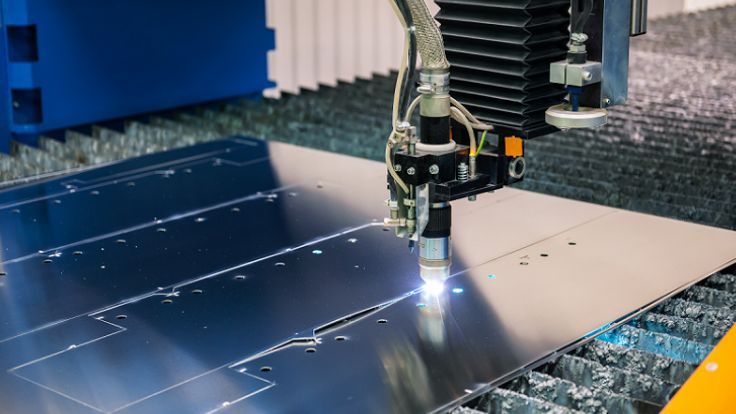

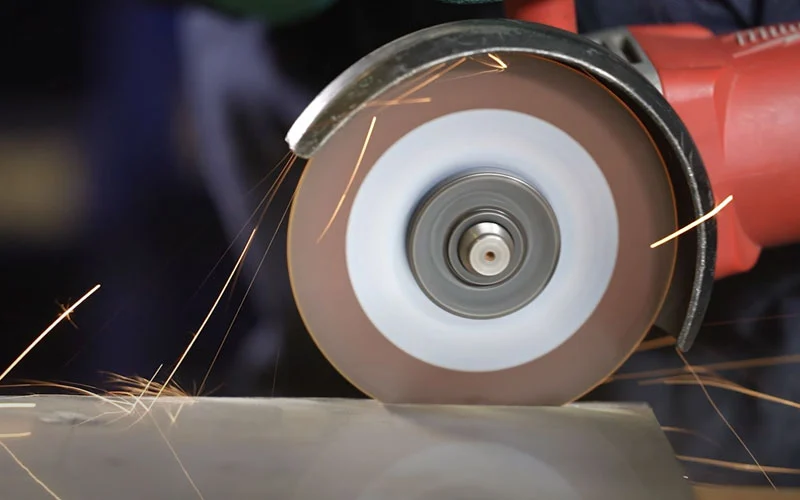
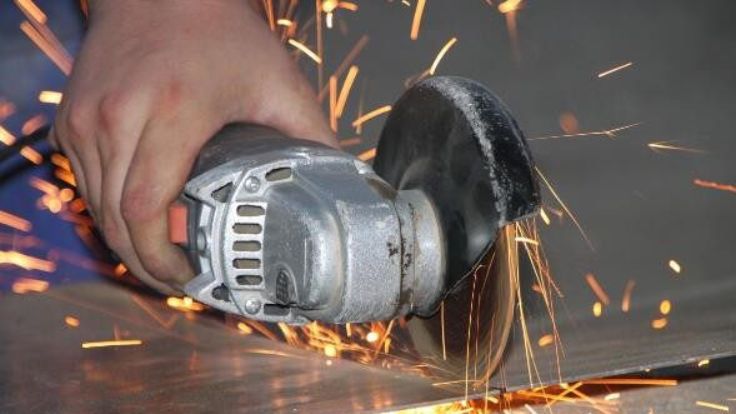
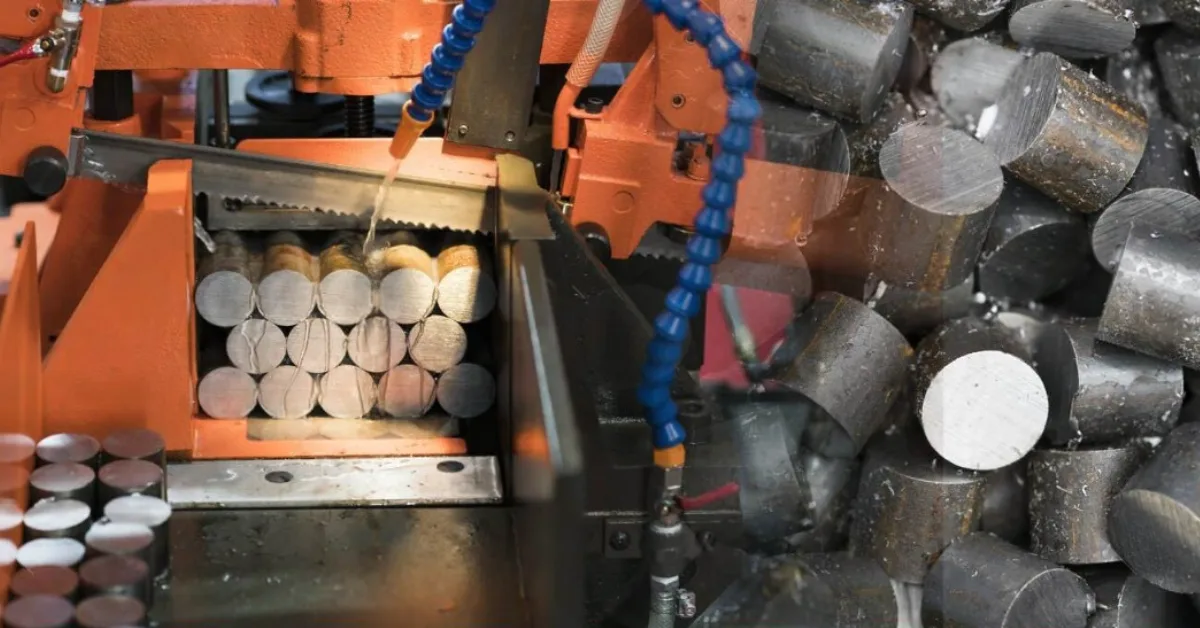

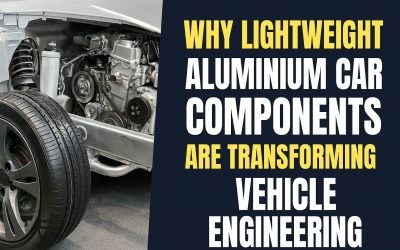
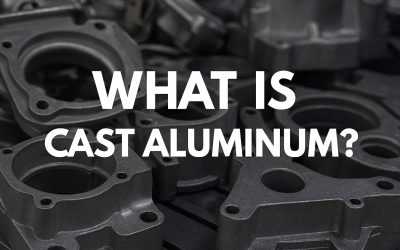
0 comentários